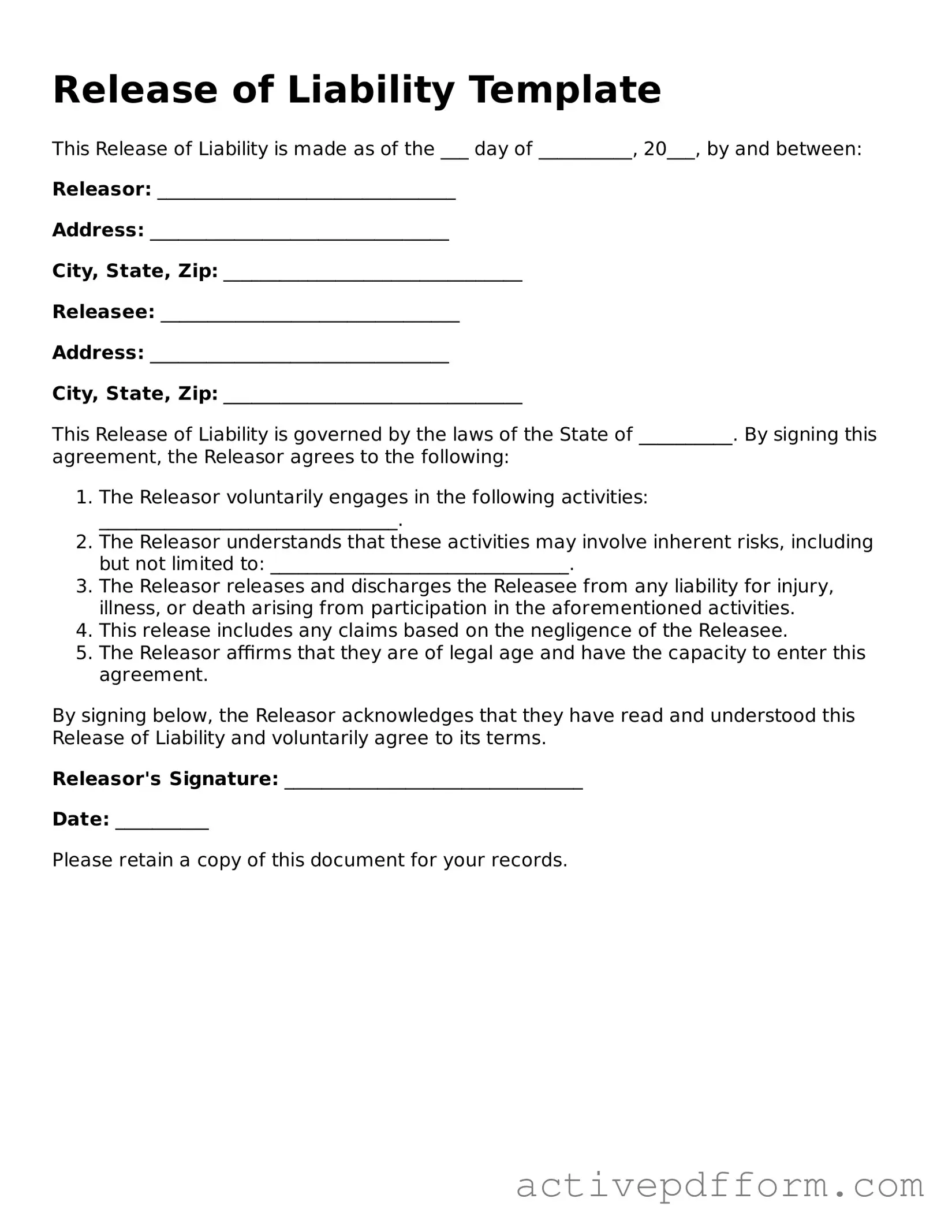Release of Liability Template
This Release of Liability is made as of the ___ day of __________, 20___, by and between:
Releasor: ________________________________
Address: ________________________________
City, State, Zip: ________________________________
Releasee: ________________________________
Address: ________________________________
City, State, Zip: ________________________________
This Release of Liability is governed by the laws of the State of __________. By signing this agreement, the Releasor agrees to the following:
- The Releasor voluntarily engages in the following activities: ________________________________.
- The Releasor understands that these activities may involve inherent risks, including but not limited to: ________________________________.
- The Releasor releases and discharges the Releasee from any liability for injury, illness, or death arising from participation in the aforementioned activities.
- This release includes any claims based on the negligence of the Releasee.
- The Releasor affirms that they are of legal age and have the capacity to enter this agreement.
By signing below, the Releasor acknowledges that they have read and understood this Release of Liability and voluntarily agree to its terms.
Releasor's Signature: ________________________________
Date: __________
Please retain a copy of this document for your records.
